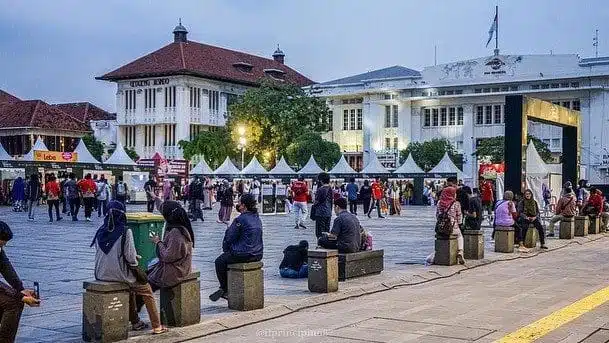Kota Tua Jakarta offers a charming window into the city’s past, with colonial buildings, museums, and lively streets creating a setting full of character. This guide from Ashley Hotel gives practical tips to help you plan your visit and enjoy the area at your own pace. With nearby stays from Ashley Hotel, you can explore comfortably and return to a relaxing place to unwind.
Overview and History of Kota Tua
Kota Tua is known for its well-preserved colonial architecture and riverside charm. Recognized as a heritage zone since the 1970s, it features dozens of historic buildings from the 1600s to the 1800s. The area’s main landmark, Fatahillah Square, remains the center of activity, surrounded by iconic structures such as the old Stadhuis and museums that highlight Jakarta’s layered past.
The story of Kota Tua stretches back to the early 1600s, when the Dutch established Batavia as a major trading post. Influences from Dutch settlers, Chinese merchants, and local communities shaped the architecture, culture, and daily life of the area. Traces of these blended roots can still be seen today in historic churches, temples, and old merchant houses.
Over time, the city center moved south, and the old quarter faced periods of decline. Restoration efforts began in the 1970s to revive the canal area, stabilize aging structures, and protect the district’s heritage. Recent improvements continue to enhance the visitor experience with better facilities, safer walkways, and digital guides that help bring history to life.
The Jakarta History Museum, Wayang Museum, and other cultural sites offer an engaging look into the city’s development. Street performers, cafés, bicycle rentals, and occasional cultural events give the area a lively atmosphere, especially on weekends.
It’s a place where Jakarta’s cultures and histories meet in one walkable district. Staying at an Ashley Hotel property nearby gives you an easy starting point for exploring the area at your own pace.
Also Read: What to Buy in North Jakarta: 6 Authentic Local Finds
How to Get There: Transportation Options
Kota Tua is easy to reach from central areas and the airport. Navigation apps like Google Maps give real-time directions and help you avoid rush hours, which usually fall in the early morning and late afternoon. Public transit is often the simplest choice, especially if you want to skip parking and avoid heavy traffic.
TransJakarta Buses
TransJakarta offers a direct route to Kota Tua, with frequent services throughout the day. It’s affordable, air-conditioned, and has clear signage, making it one of the most convenient options for visitors.
Train Services
The KRL Commuter Line stops at Jakarta Kota Station, just a short walk from the main square. This is a reliable choice if you’re coming from areas like Manggarai or the suburbs.
Ride-Hailing and Taxis
Grab, Gojek, and traditional taxis provide door-to-door convenience. Trips from central Jakarta are usually quick, while rides from the airport take longer but remain straightforward. Motorbike rides are also available for those who want to move through traffic more easily.
What to Expect: Key Attractions and Experiences
Kota Tua feels compact and lively, easy to explore in about 2.5 to 4 hours. Daytime stays under 30 degrees Celsius with 70 percent humidity, so bring a hat and at least a liter of water per hour.
Begin at Fatahillah Square, a broad plaza with shaded benches and the 1880 Coen statue. Nearby, the 1832 Cafe Batavia offers great photo spots, original wooden interiors, and delicious coffee. The History Museum in the former Stadhuis displays standout pieces like a 1667 Batavia map and classic ship models, kept cool at 23 degrees Celsius.
Stroll toward the old riverside area to see restored heritage views and daily local activity. Nearby landmarks, including historic churches and museums, offer a closer look at Jakarta’s cultural past. Many sites host occasional guided sessions or small workshops where visitors can learn traditional crafts in a relaxed setting.
Food options are plentiful around the square. Street carts and cafes serve classic Jakarta snacks, local drinks, and simple meals throughout the day. Souvenir stalls sell handmade items, traditional art pieces, and small keepsakes at a wide range of prices.
Ashley Hotel offers a comfortable stay close to the area, making it easy to explore at your own rhythm.

